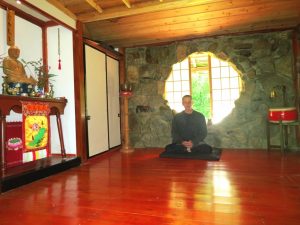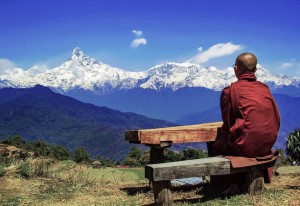
To say that it is cold outside is an understatement. The last time I checked the thermometer, it read 35º Fahrenheit (1.7ºC)—a paltry three degrees above freezing.
That said, our outdoor animals are doing fine. The chickens are snug in their coop, jostling for the best positions on their perch before they settle in for the night. And I gifted the rabbits a nice head of cabbage to snack on before insulating their hutch with wool blankets.
Chickens and rabbits are both extremely cold tolerant. Chickens are comfortable in temperatures down into the teens. Rabbits require a bit more warmth—they are unhappy if the temperature drops below the high thirties.
That said, both rabbits and chickens need to be protected from drafts and cold breezes on days like today. So I always triple-check to ensure their enclosures are weather-tight.
For our indoor animals, things are a bit simpler. We have two farm cats, Finn and Enso, who live in the house with us. Finn stays in the house year-round, and the outdoor weather is of little interest to him. Enso is an indoor/outdoor cat. During the spring, summer, and early fall he stays inside just long enough to eat before demanding to be let outside again.
However, the winter months are a little too cold for him. He runs outside just long enough to make sure everything is where he left it, then he looks into the kitchen window asking to be let back in. He hates being indoors and he’ll be grumpy until springtime, but we love him anyway.
During this time of year, my primary concern is checking the weather report several times a day and ensuring that all of our animals have the appropriate level of protection. What’s interesting is that when my animals are provided with good shelter, it almost does not matter what the weather is like.
There can be rain and freezing snow in the winter or there can be heat waves and droughts in the summer. As long as I provide them with a place of refuge, they will be safe from the storm.
Farm animals are not the only ones that require a place of refuge. In fact, I would argue that people require refuge to a much greater degree than our animal friends.
First, we require physical safe spaces. We need homes with sturdy walls and a heat source to make up for our lack of fur and feathers to keep us warm. In the West, I think it’s fair to say we also require electricity and indoor plumbing to stay alive because most homes lack a fireplace and they are not built near sources of clean water.
Second, we need mental and spiritual refuge. This is another point where the animals have it better than we do.
My chickens are wonderful, but they are not great philosophers. They do not ponder the meaning of life, they do not stay awake in the evening, feeling anxious about what tomorrow will bring. As long as they are fed and protected from predators, my animals are unimpressed with the happenings of the world.
Humans, on the other hand, struggle with the slings and arrows of life. We carry psychic wounds from things that happened days, weeks, and sometimes years in the past. These wounds become storms and they rage inside our minds with great fury.
Thus, we find ourselves in a strange situation where everything looks good on the outside, but it feels like we are dying on the inside.
In these moments, we must follow the example of our animal friends. We must take refuge from the storm. But because the storm is spiritual in nature it requires a spiritual refuge.
That’s where Buddhism comes in.
In his infinite wisdom and compassion, the Buddha saw fit to leave us the three jewels of the Buddha, the Dharma, and the Sangha as places of refuge.
When our minds are scary and filled with unhelpful thoughts, these three refuges provide shelter from the elements and tools to help us find our way.
When we take refuge in the Buddha, we follow his example, engaging in the ritual practices that he used 2,600 years ago to calm his mind. When we take refuge in the Dharma, we study the Buddhist scriptures, gleaning knowledge to help us lead lives of morality and compassion. When we take refuge in the Sangha, we look to our community of spiritual friends, treating them with generosity and asking for support when we need it.
By learning to take refuge in the triple gem of the Buddha, the Dharma, and the Sangha, we protect ourselves from the most damaging blows that life deals to us. We assuage the hurt and transform our suffering into fuel for enlightenment.
Namu Amida Butsu
Related features from BDG
Learning to Take Refuge
Taking Refuge
Within Chaos, There Is a Refuge for Meditation
Book Review: Chenxing Han’s Be the Refuge
Buddhistdoor View: Seeking Refuge in a Post-COVID World
Buddhistdoor View: We Are All Seeking Refuge












